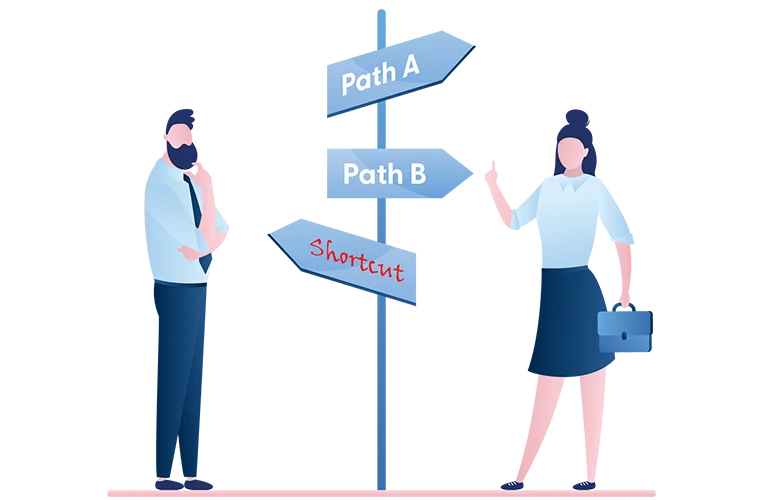I look forward to a personal consultation with you.
Call now +49 7031 9881-770
or send me a message
Herby Tessadri
Sales Manager and Authorized Signatory

Are there any PIM shortcuts?

Jochen Muffler
Our customers are marketing professionals, product managers and sales experts - but they are not software developers. So why present a solution in cryptic technical terms? Our goal has always been to make software understandable and accessible. Even B2B software equipped with many modules and functions should not ultimately be a "castle with seven seals", but a tool that solves problems. Those who sell solutions should also think in terms of solutions - and not in terms of abbreviations and unnecessary anglicisms.
From our many years of experience, we also know that software can only be successful if it is understood by the people who use it. That's why we focus on clear, customer-oriented and comprehensible communication and first-class service throughout the entire project and afterwards.
For us, it was never about using technical terms, colorful pictures and anglicisms, but about offering our customers real added value. We accompany them from the initial consultation through to implementation and ensure that our solutions can be seamlessly integrated not only into a certain system architecture, but above all into everyday working life.
We do not focus on short-term trends, but on solutions that will last in the future. We continue to develop, listen carefully to our customers and constantly improve our software as a result.
Good solutions cannot be cut short
But now to the actual topic: is it possible to speed up strategic projects and the introduction of PIM systems? Or is there potential for shortcuts here?
The decision to introduce a Product Information Management (PIM) system is a milestone for many companies, something that will ideally last for at least the next 10 years. A PIM system not only offers the opportunity to manage product data efficiently, but also supports the automation and consistency of processes - especially in complex or global business structures.
This is where a (supposedly new and tempting) approach comes into play, which is currently being discussed again and again and raises many questions: Do it yourself (DIY) or rely on experienced consultants and service providers?
"We are firmly convinced that good solutions cannot be implemented quickly, but that they take time."
It is clear to us that a well-founded concept and professional support in the initial phase pays off in the long term, especially for high-priced solutions. I would like to explain why this is the case below.
Why DIY often costs more than it saves
The temptation is great: you save the cost of sound advice, dispense with parts of the concept and "implement" the PIM system on your own. But the reality is often different. Without the necessary experience in the design, coordination and implementation of PIM systems and the onboarding of data, many challenges arise.
A lack of expertise is one of the main difficulties. A PIM system is more than just software; it is a company-wide infrastructure that needs to be aligned with processes and requirements. Mistakes in the design quickly lead to revisions and additional work. Added to this is the problem of inadequate integration. Without in-depth knowledge, crucial aspects such as the interfaces to ERP, CRM or CMS systems can be overlooked. This results in manual reworking and system interruptions that significantly impair the workflow.
Another problem is the time-consuming learning process. The internal team first has to familiarize itself with the complex subject matter, which not only extends the project duration, but also puts a strain on day-to-day work. In addition, the DIY approach often prioritizes speed in order to get the system up and running as quickly as possible. However, this entails the risk of rushing into things, which means that strategic requirements and quality criteria are neglected.
The PIM implementation paradox
I see a widespread paradox in PIM implementation in the discrepancy between the long selection phase and the short implementation time. Companies often invest months to years in selecting a suitable PIM system, but once the decision has been made, they want to "get it on the road" in six weeks. This means that important aspects of the implementation have to take place under great time pressure.
A key issue is that companies rarely undertake projects on this scale, whereas they are routine tasks for experienced providers and their consultants. Vendors have clear procedures and best practices, while companies often don't know what they don't know, to put it somewhat philosophically. This lack of knowledge can lead to key issues only being identified too late, which can lead to unnecessary project delays and, in the worst case, project failure. It is therefore all the more important to rely on professional advice to avoid these blind spots.
The implementation of a PIM system is not just an IT project, but a strategic investment in the future of your company. Consultants with many years of experience not only bring technical expertise to the table, but also the necessary foresight, industry knowledge and knowledge of potential pitfalls.
The advantages of professional consulting and conception
The successful introduction of a PIM system begins with a well-founded concept. This requires close coordination with the specialist departments in order to analyze processes, define requirements and develop a system that is precisely tailored to the company's specific needs. The focus here is not only on technical issues, but also on user-friendliness and seamless integration into existing workflows.
Experienced consultants can save valuable time and nerves, as they already know the typical challenges and stumbling blocks, especially when it comes to data transfer and the creation of rules, templates and other templates. With proven methods and best practices, errors and detours can be avoided, which can lead to considerable delays in a DIY approach. Their knowledge makes it possible to carry out efficient and targeted implementations without having to make costly corrections.
In addition to short-term implementation, it is crucial that the chosen solution is sustainable and future-proof. A professional implementation not only takes current requirements into account, but also creates a scalable basis for company growth and future developments.
In addition to technical implementation, training and change management also play an important role. A new process or a new system can only be used successfully if the employees are trained accordingly and the changeover is actively supported. Professional service providers support companies in preparing their teams for the new processes and ensure a high level of acceptance and a smooth start with structured change management measures.
Conclusion: Without shortcuts, but also without detours
The introduction of a PIM system is a complex process in which wrong decisions can quickly become expensive - whether due to rework, inefficient processes or insufficient acceptance within the team.
Those who rely on sound design and experienced advice may invest more time and money in the initial phase, but will benefit in the long term from a stable, efficient and scalable system.
A good example is building a house: without an architect, it is almost impossible to create a solid and well thought-out structure. Even if you do certain work yourself, such as laying the parquet flooring, a professional will usually do it faster and more professionally in challenging areas - while you can take care of other things during this time, such as looking for a comfortable couch in a furniture store.
Do you have any questions? Then give us a call. We look forward to talking to you and working with you to find the best solution - without any shortcuts or detours!

Jochen Muffler is managing director of crossbase and is responsible for consulting, support and marketing, among other things. His versatile know-how from 25 years of experience in the PIM environment is reflected in his blog posts and offers you valuable insights that go beyond the pure functions of a PIM system.
He will be happy to answer your questions: j.muffler@crossbase.de

